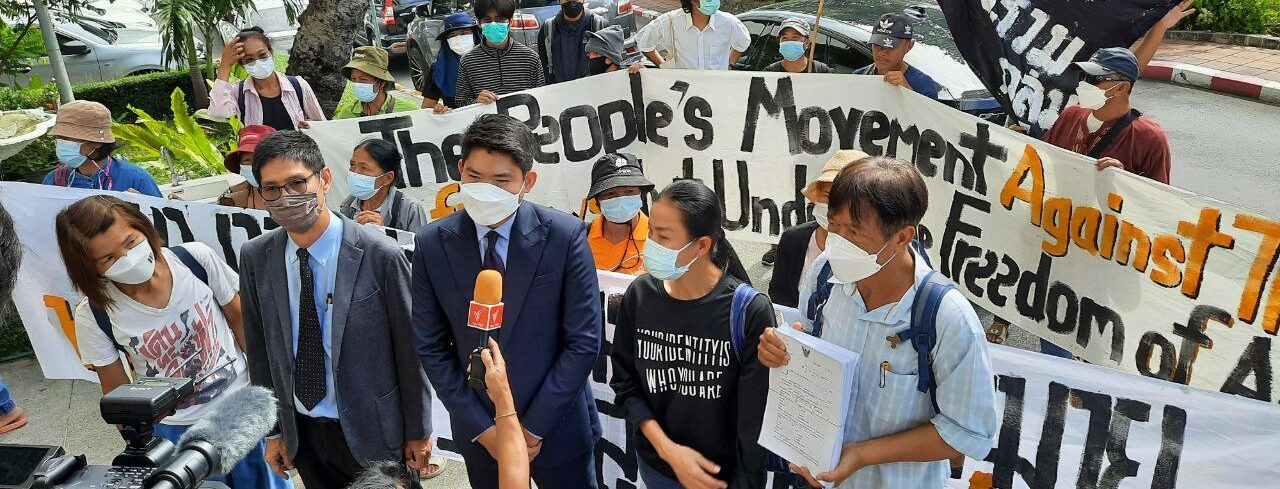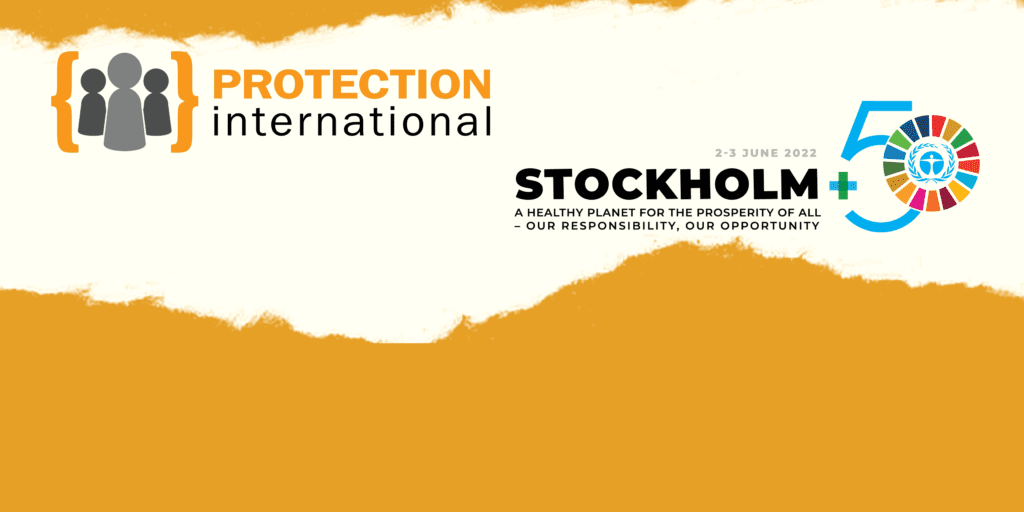Stockholm+50
On the eve of the Stockholm+50 conference, Protection International (PI) calls for environmental and climate justice human rights defenders (HRDs) to be at the center of this critical environmental meeting. The bold choices and actions proposed for UN Member States must be aligned with these defenders and their communities, and their protection must be a priority. It is a chilling fact that, in 2021 alone, environmental and climate justice defenders made up over half of the recorded killings of HRDs globally.
The protection of environmental and climate justice defenders is already enshrined in the Human Rights Council Resolution 48/13 on the right to a clean, healthy, and sustainable environment, but States must act to implement this resolution, safeguarding “the rights to life, liberty, and security” of people who defend the right to a healthy and sustainable environment. Protecting environmental and climate justice HRDs against harassment, intimidation, criminalization, and attacks must be a top priority in discussions around the “urgent need for actions to achieve a healthy planet” and the triple planetary crisis – Stockholm+50’s key goal. If the acts of defending a healthy and sustainable environment and denouncing ecocide are followed by harassment, criminalization, and killings, how can we advance? If it is not safe for individuals or communities to speak out against the unsustainable use of natural resources, resource conflict and human rights violations, environmental destruction, and the ensuing damage to socio-economic justice, who will we be able to count on to secure a liveable future?
It must not be overstated that States must, and bear the principal burden of reducing the risk that environmental and climate justice defenders may face. For that, State institutions should carry out risk analyses and protection plans for environmental and climate justice defenders. Since planning, developing, and implementing a risk analysis and protection plan for HRDs is the responsibility of the State, public policies must be adopted and the appropriate resources, both in budget and specialized personnel, made available for their proper execution.
The first law trying to address the need for protection of HRDs was passed in Colombia, 25 years ago. Since then, a growing number of countries have adopted some form of a “public policy” for the protection of HRDs, including environmental and climate justice activists, but this is far from enough. By the end of 2021, 38 countries (not even 20% of UN Member States) had discussed or adopted some form of public policy on the protection of HRDs, or have at least initiated this process (i.e. existing public debates with the involvement of authorities on the subject). Out of these 38 countries, only 14 have already enacted an actual policy, while 12 still have ongoing debates and 12 have stalled or abandoned the process.
For being the deadliest region in the world to defend the environment, Latin America is under the spotlight for the urgent need for the protection of environmental defenders. In 2018, an important step was taken with the launching of the Escazú Agreement, a legal instrument modeled on the Aarhus Convention containing a novel article specifically outlining the responsibility of States to protect environmental HRDs. This binding treaty has, thus far, been signed by 24 Latin American governments (ratified by 12) and is backed by the UN Economic Commission for Latin America and the Caribbean (ECLAC). Protection International celebrates that the Escazú Agreement gives greater rights not just to environmental and climate justice defenders, but to all Latin American citizens. It is a tool to guarantee a healthy environment and access to justice on environmental matters for future generations.
However, despite the Agreement’s highly esteemed reputation for protecting the environment and its defenders, negative counter-narratives are circulating in some Latin American States that have not yet signed or ratified Escazú. It is of utmost importance that Stockholm+50 be used as a legitimate arena to campaign for the Escazú Agreement to be signed and ratified across Latin America and to showcase it as a possible model for the rest of the world.
As the high-level dialogues take place in Stockholm, decision makers and stakeholders must remember that with every environmental and climate justice defender attacked, criminalized or killed, we lose ground on meeting national and international climate targets, and we decrease our chances for a better future on a healthy planet and addressing environmental injustices. And, with two years already passed in the UN’s Decade of Action on the Sustainable Development Goals (SDGs), UN Member States must consider environmental and climate justice defenders as the keystone to delivering the Goals by 2030.
For all these reasons, the Stockholm+50 discussions must address States´ ultimate responsibility for the protection of environmental and climate justice activism and the human right to defend our planet. During the next two days, in Stockholm, and as we did during the preparatory consultations, Protection International will keep insisting that UN Member States must:
- Commit to the protection of environmental and climate justice defenders by passing appropriate national legislation, allocating the appropriate resources, and implementing public policies that enable individuals and groups to safely and effectively defend the right to a clean, healthy, and sustainable environment;
- Commit to hastening the process to deliver on the UN’s Decade of Action on the SDGs with a clear commitment to scale up sustainable solutions including in the protection of environmental justice and climate justice defenders as partners in ensuring a liveable, just, and sustainable environment;
- Affirm the UN’s recognition of environmental and climate justice defenders as key partners in the protection of the environment and delivering on the SDGs by 2030.
- Promote the ratification of the Escazú Agreement among Latin American governments, and take it as a model to be replicated across other regions in the world; and
- Take an important leaf out of the Escazú book: place the environment and the communities who protect it at the center of discussions and commitments.


